A light in extensible thread passes over a small frictionless pully. Two blocks of masses m=kg and M=3kg respectively are attached with the thread as shown in the fig. The heavier block rests on a horizontal surface. A shell of mass 1kg moving upward with a velocity 10m/s collides and sticks with the block of mass 'm' as shown in the fig at t=0. If the long inclined plane is smooth.
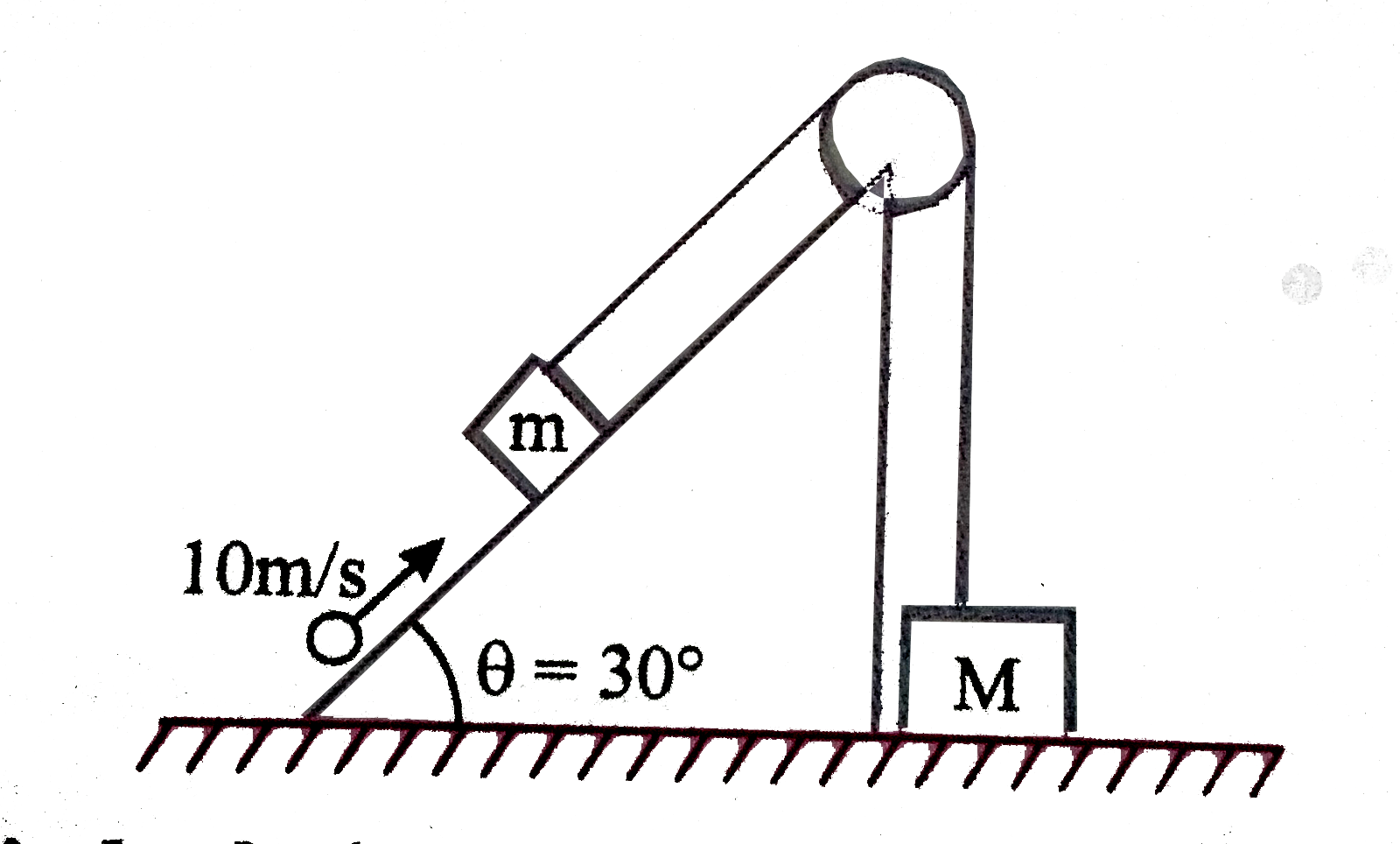
Find the total time T at that instant of maximum height ascended by M
72s
52s
32s
12s
The correct Answer is:B
(m+1)u=1×10
u=5m/s
So, the combined body will move up the plane and after a certain time it will come back to its initial position with a velocity 5m/s and time t1=2s. Now M is jerked into motion thread become taut, a sharp impluse is exerted by thread to M and combined body.
So (m+1)vo=(m+1)u−Mvo
∴Vo=2m/s
Now, M will move with retardation from free body diagrams
T−(m+1)g,sin30=(m+1)a
Mg−T=Ma
a=4m/s2
Maximum height ascended by M
v2−u2=2as
0−4=−2(4)×H
H=12m
time taken to reach that height
v=u+at,0=5−4t,t=0.5s
Total time =t'+t=2+0.5=2.5S
Topper's Solved these Questions
- BOOK - NARAYNACHAPTER - COLLISIONEXERCISE - Subjective type Questions9videos
COLLISION
- BOOK - NARAYNACHAPTER - COLLISIONEXERCISE - Level-I (H.W)52videos
COLLISION
- BOOK - NARAYNACHAPTER - COLLISIONEXERCISE - Multiple Answer11videos
COLLISION
- BOOK - NARAYNACHAPTER - CIRCULAR MOTIONEXERCISE - LEVEL II(H.W)51videos
CIRCULAR MOTION
- BOOK - NARAYNACHAPTER - FRICTIONEXERCISE - Passage type of questions I6videos
FRICTION
Similar Questions
Two particles of mases m and m' moving on parallel straight lines are at the distance 'a' apart with velocities v and v'(v>v'). The particles are connected by a string of length (>a) which was loose in the beginning. Calculate the impluse of tension of the string when it becomes taut.
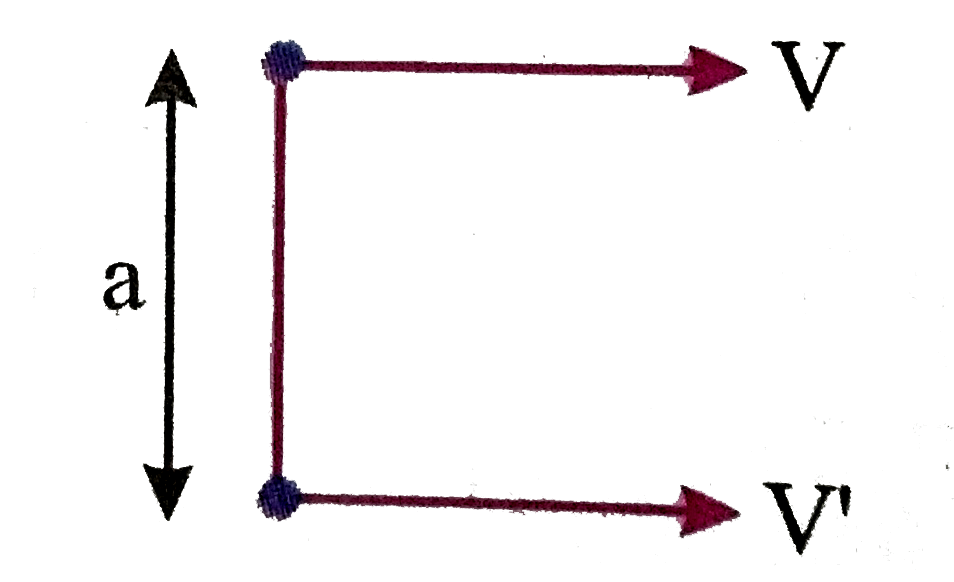 02:11View Solution
02:11View SolutionIf a force →F=(→i+2→j+→k)N acts on a body produces a displacement of →S=(4→i+→j+7→k)m, then the work done is
02:19View SolutionTwo point masses are connected by a light intextensible string are lying on a frictionless surface as shown in figure. An impulse of magnitude 10kg−m/s is given to 5kg block.
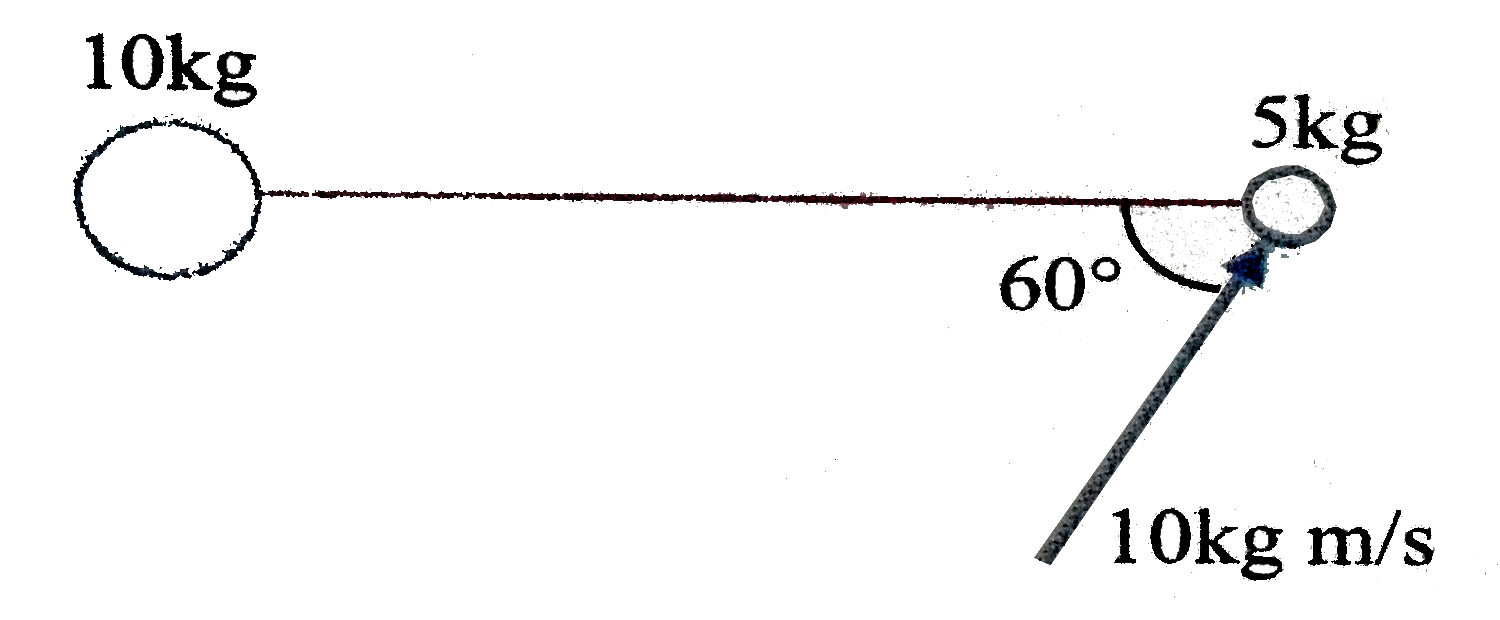 07:42View Solution
07:42View SolutionA ball of mass 0.2 kg is thrown vertically upwards by applying a force by hand. If the hand moves 0.2 m while applying the force and the ball goes upto 2 m height further, find the magnitude of the force. (Consider g=10m/s2).
13:53View SolutionIn the adjacent figure, x-axis has been taken down the inclined plane. The coefficient of friction varies with x as μ=kx, where k=tanθ. A block is released at O.

The maximum velocity of block will be:13:53View SolutionFor the system shown in Fig. the string is light and pulley is frictionless. The 4kg block is given an upward velocity of 1m/s. The centre of mass of the two blocks will [neglect the impulse duration]
 01:48View Solution
01:48View SolutionA block of mass m moving with a velocity v_(0) collides with a stationary block of mass M to which a spring of stiffness k is attached, as shown in Fig. Choose the correct alternative(s)
08:11View SolutionA pan of mass m=1.5kg and a block of mass M=3kg are connected to each other by a light inextensible string, passing over a light pulley as shown in Fig. Initially, the block is resting on a horizontal floor. A ball of mass m0=0.5kg collides with the pan at a speed v0=20m/s. Consider this instant of collision as t=0. Assume collision to be perfectly inelastic. Now, Fig. answer the following questions based on the above information.
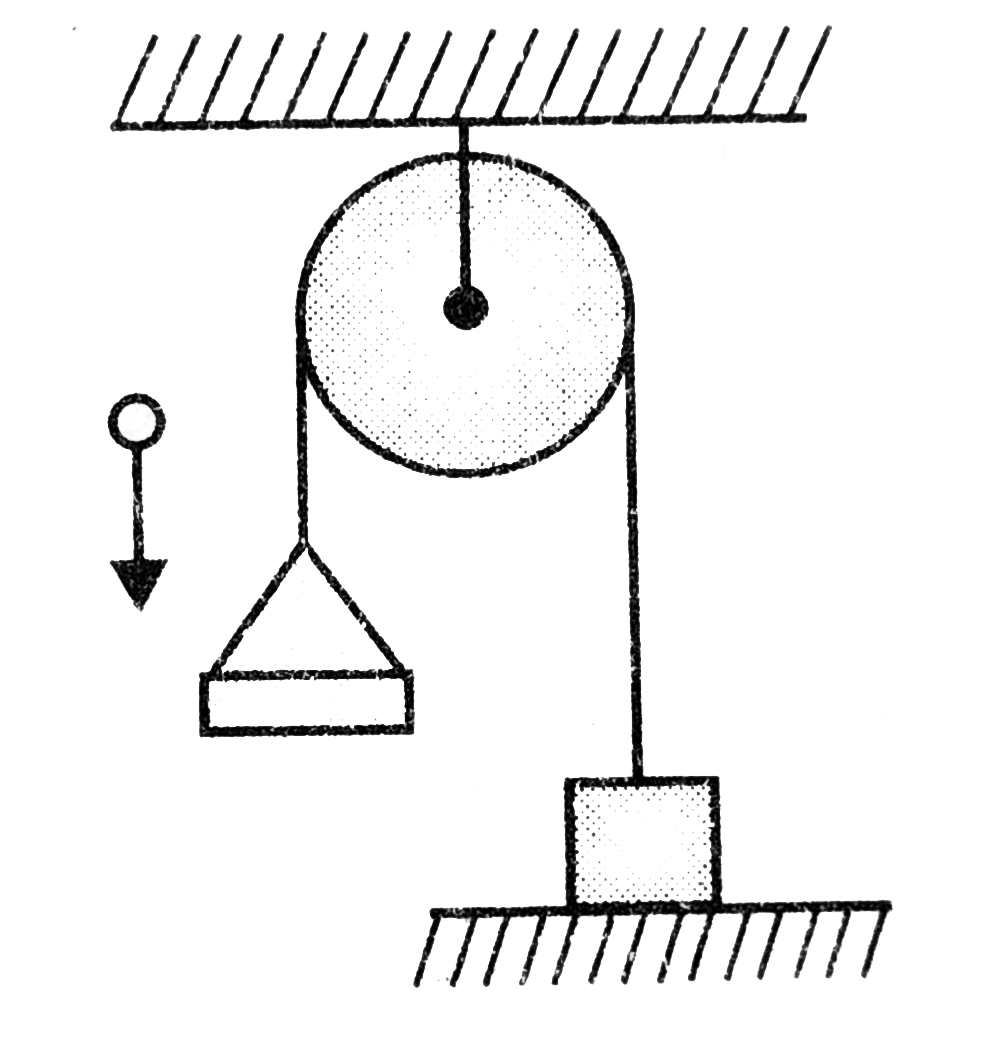
. Find the maximum height reached by the block alter the second jerk.02:28View SolutionA light in extensible thread passes over a small frictionless pully. Two blocks of masses m=kg and M=3kg respectively are attached with the thread as shown in the fig. The heavier block rests on a horizontal surface. A shell of mass 1kg moving upward with a velocity 10m/s collides and sticks with the block of mass 'm' as shown in the fig at t=0. If the long inclined plane is smooth.
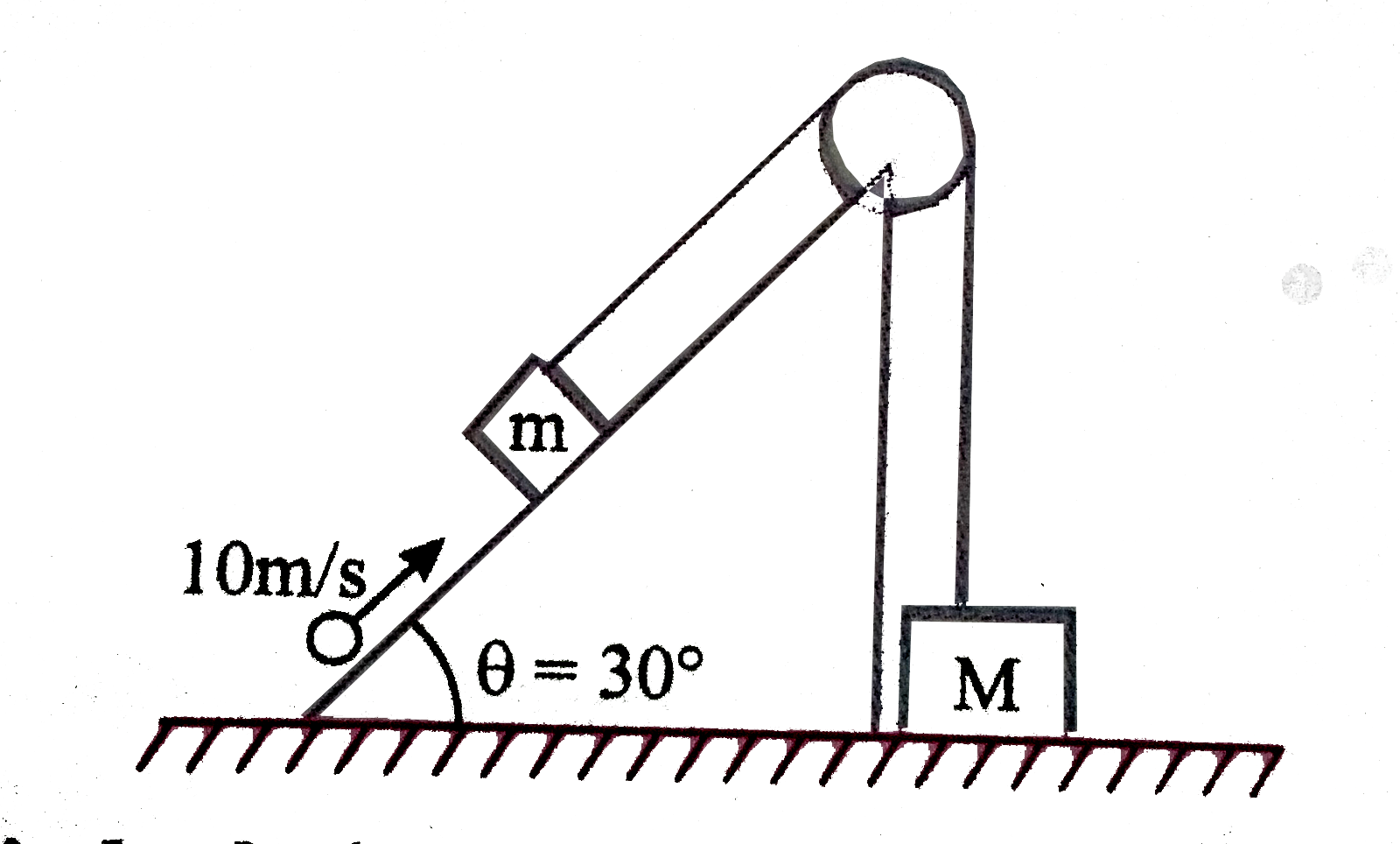
Find velocity of (m+shell) just after collision.05:00View SolutionA light in extensible thread passes over a small frictionless pully. Two blocks of masses m = kg and M = 3kg respectively are attached with the thread as shown in the fig. The heavier block rests on a horizontal surface. A shell of mass 1 kg moving upward with a velocity 10m//s collides and sticks with the block of mass 'm' as shown in the fig at t = 0 . If the long inclined plane is smooth. Find the maximum height ascended by 'M'
02:13View SolutionA bullet of mass 'm' moving with velocity 'u' passes through a wooden block of mass M=nm as shown in figure. The block is resting on a smooth horizontal floor. After passing through the block, velocity relative to the block is
 .04:30View Solution
.04:30View SolutionIn the arrangement as shown, block A of mass 3 kg moves towards left with velocity 10m//s . Initially block A is 100m from pulley on a smooth surface. Block B is of mass 2kg ( g = 10 m//s^(2) )
04:12View Solutionचाल 5 मी/से से गतिमान द्रव्यमान 10 किग्रा का एक गुटका विरामावस्था में रखे द्रव्यमान 20 किग्रा के एक दूसरे गुटके से टकराता है तथा चाल 2 मी/से से वापस लौट आता है | टक्कर के उपरांत दूसरे गुटके का वेग क्या होगा ?
02:09View SolutionA light inelastic thread passes over a small frictionless pulley. Two blocks of masses m = 1 kg and M = 3 kg, respectively, are attached with the thread and heavy block rests on a surface. A particle P of mass 1 kg moving upward with a velocity of 10 ms^(-1) collides with the lighter block and sticks to it. The speed of the bigger block just after the string is taut will be [g = 10 ms^(-2)]
02:25View SolutionTwo blocks of masses 10 kg and 4 kg are connected by a negligible mass and placed on a frictionless horizontal surface. An impulse gives a velocity of 14 m/s to the heavier block in the direction of the lighter block. The velocity of the centre of mass is :
01:26View Solution

